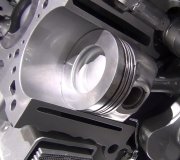This has nothing to do with the torque converter or any part of the transmission if the engine quit running while driving on the highway. For that to happen, you had to lose fuel pressure, spark, both of them at the same time, or compression. Spark plug wires didn't jump out and change positions, and the distributor didn't loosen up and turn by itself, so don't get wrapped up in looking for that kind of stuff.
Unless I missed it, you didn't say if the engine has ever started again since this happened. If it hasn't, I assume it cranks ok. Clear that up if I'm wrong. If I'm right, don't go throwing parts at it without diagnosing the problem first. Every part you replace or anything you change introduces another variable that could add an additional problem or cover up an important clue.
The most common failures while driving are the crankshaft position sensor and the camshaft position sensor. Typically they will work again once they cool down, but they can fail permanently. When they fail, the Engine Computer does not know the engine is rotating so it turns off the Automatic Shutdown (ASD) relay. That relay removes voltage from the ignition coil and fuel pump or pump relay, so you will have no spark AND no fuel pressure.
The misleading thing about checking for loss of fuel pressure is the pump will still run for one second after you turn on the ignition switch. That one second is normal, and is enough to make it appear you have pressure. What is important is if the pump starts running again when the engine is being cranked. It can be hard to hear, so it's easier to take voltage readings. There are a number of things on the same circuit that are easier to measure than the fuel pump.
Use a test light or a cheap digital voltmeter to check for voltage on either of the two small wires on the back of the alternator. You should see voltage there for one second after a helper turns on the ignition switch, then it will go to 0 volts. The voltage must come back during engine cranking.
Caradiodoc
Thursday, March 25th, 2010 AT 3:16 PM


